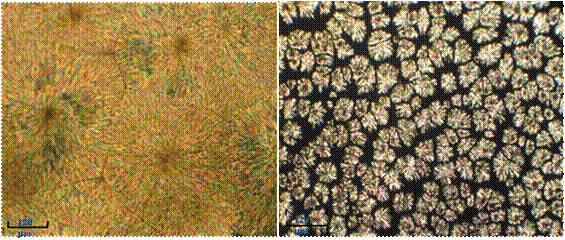Our research is focused on environmentally appropriate polymers, which are being used in biomedical devices, coatings, packaging, adhesives etc. We have been able to develop collaborative initiatives with both academic and industrial partners that promote exciting scientific programs and at the same time promote environmentally friendly technologies. We are considered to be experts in spectroscopic techniques that can be utilized to characterize polymer microstructures and their changes as a function of time, temperature and external forces. Theory and experiments are being carried out to characterize the phase equilibria of various reactive multi-component polymer systems. We are capable of measuring polymer structural transformations (e.g. amorphous to crystalline) with high spatial and temporal resolution that provide molecular interpretations of relevant macroscopic physical properties.
As an example, we aim to replace PVC, 20% of world’s polymer market, with Poly(lactic acid) (PLA). PVC is already banned in Europe and is facing regulatory restrictions in this country, because of the toxic plasticizers currently being used to make it. PLA has a number of attractive properties (such as being biodegradable, biocompatible, high modulus, synthesized from non-petroleum feedstock…) and is being developed into both specialized and commodity applications. In most applications samples need to be tough, some to the point of being rubbery. In addition, sample stability as a function of time, is a necessary requirement during various manufacturing steps and in the final product after deployment. Based on the studies carried out in my laboratory over the last few years, we have been able to take advantage of the relative crystallization rates (stereocomplex versus neat L- or D-isomer) to “trap” the continuous amorphous phase that we hypothesized for the exceptional mechanical properties obtained. This can be seen in the optical microscopic images. We have also obtained Raman “microscopic images” showing the origin of the nucleation process and the growth of the crystals subsequently.
we aim to replace PVC, 20% of world’s polymer market, with Poly(lactic acid) (PLA). PVC is already banned in Europe and is facing regulatory restrictions in this country, because of the toxic plasticizers currently being used to make it. PLA has a number of attractive properties (such as being biodegradable, biocompatible, high modulus, synthesized from non-petroleum feedstock…) and is being developed into both specialized and commodity applications. In most applications samples need to be tough, some to the point of being rubbery. In addition, sample stability as a function of time, is a necessary requirement during various manufacturing steps and in the final product after deployment. Based on the studies carried out in my laboratory over the last few years, we have been able to take advantage of the relative crystallization rates (stereocomplex versus neat L- or D-isomer) to “trap” the continuous amorphous phase that we hypothesized for the exceptional mechanical properties obtained. This can be seen in the optical microscopic images. We have also obtained Raman “microscopic images” showing the origin of the nucleation process and the growth of the crystals subsequently.
